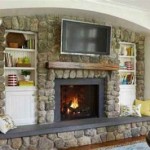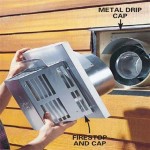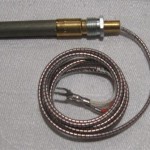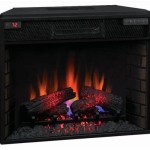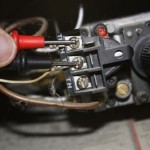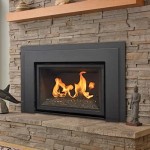Outdoor Fireplace Designs for Cooking: A Comprehensive Guide
An outdoor fireplace is more than just an aesthetic addition to a backyard. It offers a functional space for cooking, entertaining, and extending the enjoyment of outdoor living beyond the warmer months. When designed with cooking in mind, an outdoor fireplace can become the centerpiece of culinary experiences, offering a unique and versatile cooking method that complements traditional grills and smokers.
The integration of cooking capabilities into an outdoor fireplace design requires careful consideration of several factors. These include the structural design of the fireplace, the materials used in its construction, the types of cooking methods it will accommodate, and the safety measures implemented to ensure a secure and enjoyable cooking experience. This article explores the various outdoor fireplace designs optimized for cooking, providing a comprehensive overview of their features, benefits, and considerations.
Design Considerations for Cooking-Centric Outdoor Fireplaces
The design process for an outdoor cooking fireplace should begin with a clear understanding of the intended cooking methods and culinary preferences. This understanding will guide the selection of appropriate design features and materials. Key aspects to consider include the fireplace's dimensions, cooking surface, ventilation, and storage.
A larger fireplace will provide more cooking surface area and allow for greater flexibility in terms of accommodating different cooking vessels. The cooking surface itself can be a grill grate, a flat top griddle, or even a built-in brick oven. The integration of a chimney or other ventilation system is crucial for directing smoke away from the cooking area and ensuring proper combustion. Finally, incorporating storage space for firewood, cooking utensils, and other accessories streamlines the cooking process and helps maintain a tidy outdoor space.
The selection of materials is also crucial. Fire-resistant materials such as firebrick, stone, and concrete are essential for withstanding the high temperatures generated by the fire. The choice of materials will also influence the overall aesthetic of the fireplace, so it's important to consider how the design will complement the existing outdoor landscape.
Types of Outdoor Fireplace Designs for Cooking
Several distinct outdoor fireplace designs cater specifically to cooking needs. Each design offers unique features and benefits, making it suitable for different cooking styles and preferences. The following are some of the most popular types:
Traditional Masonry Fireplace with Grill: This classic design incorporates a traditional brick or stone fireplace with a built-in grill grate. The grill grate can be adjustable in height to control the cooking temperature. This type of fireplace is versatile and can be used for grilling, roasting, and smoking. The masonry construction provides excellent heat retention, ensuring even cooking.
Pizza Oven Fireplace: Designed specifically for baking pizzas, this type of fireplace features a domed oven chamber made of firebrick. The intense heat within the oven allows for quick and efficient cooking of pizzas with a crispy crust. Some pizza oven fireplaces also include a wood storage area and a preparation surface.
Argentinian Grill (Asado): Inspired by traditional South American grilling techniques, the Argentinian grill features a sloped grill surface and a brasero (fire basket) for burning wood or charcoal. The sloped grill allows for precise temperature control, as the heat intensity varies depending on the position of the food on the grill. The brasero provides a consistent source of hot embers for cooking.
Smoker Fireplace: This design combines the features of a traditional fireplace with those of a smoker. It includes a firebox for burning wood and a smoking chamber for cooking food at low temperatures over an extended period. Smoker fireplaces often feature adjustable vents and dampers to control the airflow and smoke levels.
Outdoor Kitchen Fireplace: This is a more comprehensive design that integrates a fireplace with a full outdoor kitchen setup. It may include a built-in grill, a side burner, a sink, countertops, and storage cabinets. Outdoor kitchen fireplaces provide a complete outdoor cooking space, making them ideal for serious outdoor chefs.
Each of these designs offers unique cooking capabilities, allowing for a diverse range of culinary experiences. The choice of design will ultimately depend on individual preferences, cooking styles, and budget considerations.
Key Features and Functionalities for Enhanced Cooking
To optimize an outdoor fireplace for cooking, certain features and functionalities should be prioritized. These features enhance the cooking experience and improve the overall functionality of the fireplace.
Adjustable Grill Grates: The ability to adjust the height of the grill grate is crucial for controlling the cooking temperature. Lowering the grate brings the food closer to the heat, while raising it reduces the intensity of the heat. This allows for precise control over the cooking process, preventing burning and ensuring even cooking.
Built-in Thermometers: Integrating thermometers into the fireplace design allows for accurate monitoring of the cooking temperature. This is especially important for smoking and roasting, where maintaining a consistent temperature is essential for achieving optimal results.
Ventilation and Dampers: Adjustable vents and dampers control the airflow within the fireplace, regulating the combustion process and smoke levels. This is particularly important for smoker fireplaces, where controlling the smoke is essential for imparting flavor to the food.
Rotisserie Attachments: Adding a rotisserie attachment allows for slow, even cooking of meats, resulting in tender and flavorful dishes. Rotisserie attachments typically consist of a motorized spit that rotates the food over the fire.
Side Burners: Integrating a side burner into the fireplace design provides a convenient surface for cooking sauces, soups, and other side dishes. This eliminates the need to run back and forth to the indoor kitchen, streamlining the cooking process.
Storage Space: Ample storage space for firewood, cooking utensils, and other accessories is essential for maintaining a tidy and organized outdoor cooking area. Storage can be integrated into the fireplace design in the form of wood boxes, cabinets, or shelves.
These features and functionalities contribute to a more efficient, enjoyable, and versatile outdoor cooking experience. By incorporating these elements into the fireplace design, homeowners can create a truly functional and aesthetically pleasing outdoor cooking space.
Safety Considerations for Outdoor Cooking Fireplaces
Safety is paramount when designing and using an outdoor cooking fireplace. Implementing appropriate safety measures helps prevent accidents and ensures a secure cooking environment. Key safety considerations include fire prevention, ventilation, and structural integrity.
Fire Prevention: The fireplace should be located a safe distance away from any flammable materials, such as trees, fences, and buildings. A non-combustible surface, such as concrete or gravel, should surround the fireplace to prevent the spread of sparks and embers. A fire extinguisher or a water source should be readily available in case of emergency.
Ventilation: Proper ventilation is essential for ensuring complete combustion and preventing the buildup of carbon monoxide. The fireplace should be designed with a chimney or other ventilation system to direct smoke away from the cooking area. Regular cleaning of the chimney is necessary to prevent creosote buildup, which can be a fire hazard.
Structural Integrity: The fireplace should be constructed using durable, fire-resistant materials that can withstand the high temperatures generated by the fire. The foundation should be stable and level to prevent the fireplace from shifting or collapsing. Regular inspections should be conducted to identify any signs of damage or deterioration.
Safe Cooking Practices: Always use appropriate cooking utensils and equipment. Never leave the fireplace unattended while it is burning. Keep children and pets a safe distance away from the fire. Allow the fireplace to cool completely before cleaning it. Properly dispose of ashes and embers.
By adhering to these safety guidelines, homeowners can minimize the risk of accidents and enjoy a safe and enjoyable outdoor cooking experience.
Material Selection for Durability and Aesthetics
The selection of materials for an outdoor cooking fireplace plays a crucial role in its durability, performance, and aesthetic appeal. Fire-resistant materials are essential for withstanding the high temperatures and harsh weather conditions associated with outdoor cooking. The choice of materials will also influence the overall style and appearance of the fireplace.
Firebrick: Firebrick is a type of refractory brick specifically designed to withstand high temperatures. It is commonly used for lining the firebox and oven chamber of outdoor cooking fireplaces due to its excellent heat resistance and thermal mass. Firebrick can absorb and retain heat, ensuring even cooking and efficient fuel consumption.
Stone: Stone is a durable and aesthetically pleasing material that can be used for the exterior of an outdoor fireplace. Natural stone, such as limestone, granite, and sandstone, offers a rustic and elegant look. Manufactured stone veneers provide a more cost-effective alternative while still offering a similar appearance.
Concrete: Concrete is a versatile material that can be used for various components of an outdoor fireplace, including the foundation, walls, and countertops. Concrete is durable, fire-resistant, and can be molded into different shapes and sizes. It can also be stained or stamped to create different textures and patterns.
Metal: Metal components, such as grill grates, rotisserie attachments, and side burners, are typically made of stainless steel or cast iron. Stainless steel is durable, resistant to rust and corrosion, and easy to clean. Cast iron is excellent for heat retention and is often used for grill grates and cooking surfaces.
Mortar: Mortar is used to bind together the bricks, stones, or concrete blocks that form the structure of the fireplace. High-temperature mortar is specifically formulated to withstand the high temperatures generated by the fire. It is important to use the correct type of mortar to ensure the structural integrity of the fireplace.
The combination of these materials creates a durable, functional, and aesthetically pleasing outdoor cooking fireplace that will provide years of enjoyment.
Maintenance and Cleaning for Longevity
Regular maintenance and cleaning are essential for prolonging the lifespan of an outdoor cooking fireplace and ensuring its optimal performance. Proper maintenance involves cleaning the fireplace, inspecting it for damage, and making necessary repairs.
Cleaning: After each use, remove ashes and debris from the firebox and cooking surfaces. Clean the grill grates with a wire brush to remove food residue. Regularly clean the chimney to prevent creosote buildup. Use a mild detergent and water to clean the exterior surfaces of the fireplace.
Inspection: Regularly inspect the fireplace for any signs of damage, such as cracks, chips, or loose bricks. Check the chimney for any obstructions or signs of deterioration. Inspect the grill grates and other metal components for rust or corrosion.
Repairs: Repair any cracks or chips in the brickwork or stonework with high-temperature mortar. Replace any damaged or corroded metal components. Seal any gaps or cracks in the chimney to prevent water damage.
Protective Measures: Cover the fireplace with a waterproof cover when it is not in use to protect it from the elements. Apply a sealant to the exterior surfaces of the fireplace to prevent water damage and staining.
By following these maintenance and cleaning guidelines, homeowners can ensure that their outdoor cooking fireplace remains in excellent condition for years to come. This proactive approach will help prevent costly repairs and extend the life of the fireplace.

60 Creative Outdoor Kitchen Ideas For Your Home In 2024 Covered Patio Backyard Fireplace

10 Outdoor Fireplace Ideas You Ll Want To Copy Bob Vila

60 Creative Outdoor Kitchen Ideas For Your Home In 2024 Patio Backyard

Outdoor Fireplace Kits Kitchens Belgard

12 Best Outdoor Fire Pit Ideas Diy Backyard

Outdoor Kitchen Designs Featuring Ovens Fireplaces And Other Cool Accessories

Outdoor Oven Fireplace Options And Ideas

Amazing Fire Pit Outdoor Fireplace Ideas Natural Brick Stone Depot

Dream Outdoor Kitchen Landscaping Ideas Backyard Patio Designs

22 Cozy Diy Outdoor Fireplaces Fire Pit And Fireplace Ideas
Related Posts

